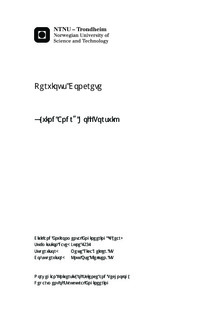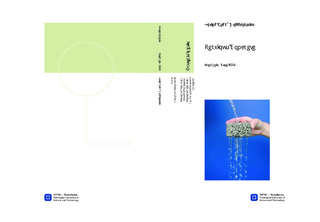| dc.contributor.advisor | Geiker, Mette Rica | nb_NO |
| dc.contributor.advisor | Kjellsen, Knut Ose | nb_NO |
| dc.contributor.author | Torsvik, Øyvind André Hoff | nb_NO |
| dc.date.accessioned | 2014-12-19T12:00:47Z | |
| dc.date.available | 2014-12-19T12:00:47Z | |
| dc.date.created | 2012-11-08 | nb_NO |
| dc.date.issued | 2012 | nb_NO |
| dc.identifier | 566169 | nb_NO |
| dc.identifier | ntnudaim:7939 | nb_NO |
| dc.identifier.uri | http://hdl.handle.net/11250/237012 | |
| dc.description.abstract | Pervious concrete is a material with a high degree of permeability but generally low strength. The material is primarily used for paving applications but has shown promise in many other areas of usage. This thesis investigates the properties of pervious concrete using normal Norwegian aggregates and practices. An overview of important factors when it comes to designing and producing pervious concrete is the result of this investigation. Several experiments have been performed in the concrete research facility at NTNU, Trondheim.The importance of the void content of pervious concrete cannot be overstated. Too much void content leads to low strength while not enough void and permeability suffers and the concrete can hardly be called pervious. Proper design of pervious concrete is therefore largely dependent on finding the balance between strength and water permeability. The large interconnected voids in the material is achieved by using a near single sized aggregate of relatively large grains. The packing of this coarse aggregate leads to large voids due to the similar sizes of the grains. The amount of void left in the final concrete is then determined by how much binder is allowed to be mixed into the aggregates.Ten different batches of mortar has been produced with the intention of investigating the application of said mortars as the binder in pervious concrete. Six different batches of pervious concrete has been produced and tested for such properties as strength, permeability, density and void content. The goal of the experiments is to find and evaluate methods of determining the properties of pervious concrete. Mixing method of the material in addition to varying theoretical void content has been the focus of the experimental work. | nb_NO |
| dc.language | eng | nb_NO |
| dc.publisher | Institutt for konstruksjonsteknikk | nb_NO |
| dc.subject | ntnudaim:7939 | no_NO |
| dc.subject | MIBYGG Bygg- og miljøteknikk (2 årig) | no_NO |
| dc.subject | Konstruksjon | no_NO |
| dc.title | Pervious Concrete | nb_NO |
| dc.type | Master thesis | nb_NO |
| dc.source.pagenumber | 108 | nb_NO |
| dc.contributor.department | Norges teknisk-naturvitenskapelige universitet, Fakultet for ingeniørvitenskap og teknologi, Institutt for konstruksjonsteknikk | nb_NO |

